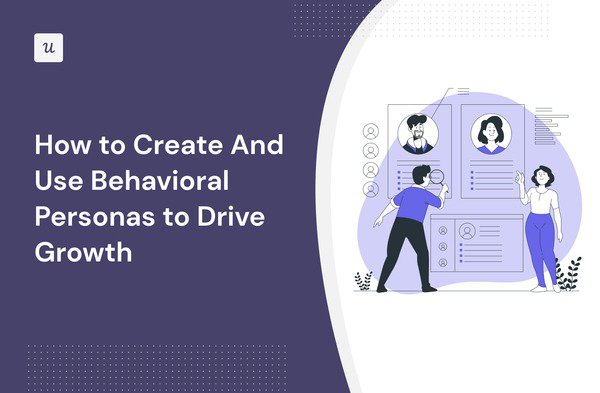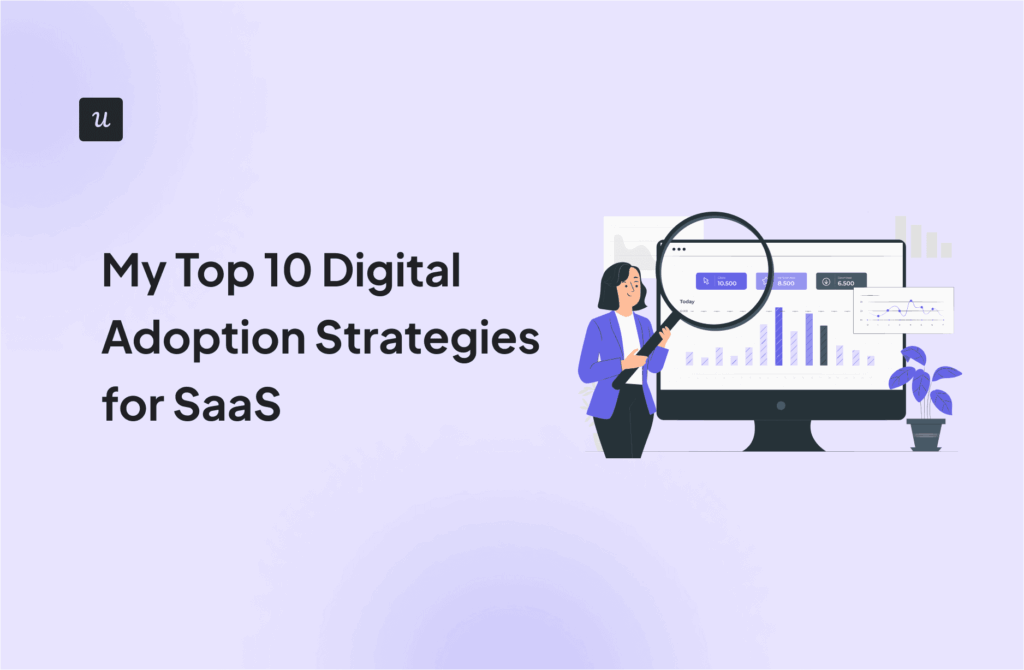
Understanding how behavioral personas work can be a game changer for product managers.
In this article, we’ll explain what behavioral personas are, the invaluable insights, and how to use them to drive growth in your SaaS. Ready to get into it?
Let’s go!
Try Userpilot Now
See Why 1,000+ Teams Choose Userpilot

Summary of behavioral personas
- A user behavioral persona is a document representing a distinct group of users who share similar behaviors, motivations, and goals.
- Traditional personas and behavioral personas are subtly different: traditional personas are more focused on who a person is (i.e. needs, motivation, values), whereas behavioral personas use data (i.e. site search data and other analytics) to map out the behaviors, habits, and methodologies of your target users.
- Behavioral personas make identifying and understanding user journeys far simpler, creating personalized experiences is much more targeted and effective, and not only will you improve retention, but lifetime value. Simply put, behavioral personas help drive business growth.
- To create behavioral personas in your own app, start with your existing user personas as a foundation to build from.
- Once you have defined your main customer segments, the next step is to analyze their path to value. Remember to gather product data around how different sets of behavioral personas tend to use different features. You can also use analytics to identify how your most engaged users behave.
- So how can behavioral personas help you unlock product growth? Two primary methods are personalization and proactivity.
- Behavioral personas make creating bespoke, personalized onboarding throughout the product lifecycle simple. You can focus on driving repeated value by prompting distinct segments of users in the right direction.
- They also make it far simpler to look at the data and take proactive steps if you see negative trends. For example, if feature engagement is low, you might take decisive action to build in-app guides or self-service guidance in a resource center.
- Of course, having the right tooling helps. Userpilot is a powerful product adoption platform that can help you make the most of behavioral personas to drive growth.
What is a user behavioral persona?
A user behavioral persona is a tool that helps to represent a group of users who share similar behaviors, motivations, and goals.
They are used in user experience design to help businesses better identify their target users and map out how they interact with their products or services.
Behavioral personas are created by analyzing user data (i.e. website traffic, customer surveys, and user interviews). This data can be used to identify common themes and patterns in user behavior.
For example, the pages they visit most often, the features they use the most, and the tasks they are trying to accomplish.
Behavioral personas vs traditional personas
User personas and behavioral personas are two different methods for building an understanding of your target users:
User personas are representations of your customers.
They are created by combining data about your target audience with your insights and assumptions about their needs, goals, and motivations. Traditional personas can help you to better understand your target audience and to design products and services that meet their needs.
Behavioral personas are subtly different from user personas.
They focus more on the behaviors and habits of your target users. Behavioral personas are created by analyzing data about how your target users interact with your products or services.
Why is creating behavioral personas important?
We’ve covered what they are. But why does it matter and what’s the point of expending the effort creating them?
Better understanding of different user journeys
Firstly, behavioral personas will give you a better understanding of the journeys (including context, pain points, and more) that your target audience is working through.
You can map out and understand the relevant happy paths corresponding to each persona.
More personalized experiences that lead to higher engagement
Focusing on the most valuable improvements and features you can offer in a targeted way with personalization reduces a huge amount of risk.
Personas make personalization far easier and more effective.
Ultimately, they put you in a stronger position to act on each insight you uncover, personalize the in-app experience for each distinct persona, and in doing so, reduce the time to value.
Higher user retention and increased lifetime value
The first two benefits we’ve described have a knock-on impact on retention.
A key reminder: users who get repeated value and benefit from using your product don’t churn because they don’t have a reason to leave.
Defining clear user personas – informed by user research – can help you identify pain points and opportunities for improvement to existing systems, inform the design process, and ultimately drive behavior change.
How to get started with creating behavioral personas
Next up, we’re going to break down the process of creating user personas in your own app.
Start with your existing customer personas
If you can answer the question “Who uses my product or service and how does it help them?”, you have the vast bulk of what you need to create a persona.
It’s a vital first step.
Set out the main jobs to be done by your users, their needs, their pain points, and the business context. You want to get a sense a solid picture of who your audience is.
One easy way to validate, define, and understand who your users are is simply by gathering key information from them during signup.

Understand the path to value for your customer personas
Once you have defined your main customer segments, the next step is to analyze their path to value.
What features do they engage with? How often? In which sequence?

By observing how users behave and plotting out the most economical route to value, you’ll unlock some key insights, and that puts you in a strong position to influence, guide, and ‘nudge’ other users down a similar path to value.
Monitor product usage for different personas using customer segments
“Data is the new gold.”
Gather product data around the usage of specific features for different sets of behavioral personas. Over time, you’ll see patterns emerge: are there daily spikes, weekly routines, or monthly cycles?
A reminder that you should take the time and effort to look into this data segment by segment.
You’ll learn how different personas react in different contexts, build a sense of which segments gain the most value from specific features, and adjust your approach accordingly.

Understand how your most engaged users behave
Collect actionable insights with trends analysis. From this data, you’ll be able to quickly work out the tools, tactics, and methods of the most successful subset of your audience.
You may see them referred to as a ‘power user’ – and you can suggest improvements accordingly.

How to use behavioral personas to drive product growth
The final piece of the puzzle. How can behavioral personas help you unlock product growth?
There isn’t a one-size-fits-all solution, and of course, it’ll depend on your business focus.
As a rule of thumb, identify your weak spots (i.e. do you have churn issues, is your conversion rate low, are you lacking engagement) and prioritize your efforts there.
Build personalized in-app engagement for different behavioral personas
A common misconception is that personalization purely helps onboarding.
Personalization can help throughout the entire journey. Rather than a step in the process, it’s a framework or way of thinking. It’s continuous and should inform the product design process.
You can focus on driving repeated value by prompting distinct segments of users in the right direction.
Let’s look at a worked example.
Let’s say analyzing data has shown you have two distinct user groups (each with a specific behavioral persona), and you want to compare.
Group A engages with a feature regularly and boasts extremely high satisfaction (i.e. a power user).
Group B has barely ever used it.
You can personalize the experience for the second group by encouraging them with in-app prompts to discover and engage with the feature.

Track behavior changes and proactively act on data
The next tactic is to use behavioral personas to stop being reactive and become more proactive and strategic.
Monitoring usage closely will help you spot negative trends, spikes in drop-offs, issues in your main user funnels, and more.
Referring to behavioral personas as a key reference point throughout means you’ll automatically have a deep enough understanding of how these trends impact each user segment.
You can then quickly take decisive, corrective action.

For example:
- High churn rates? Personalize the onboarding to shorten the route to value.
- Low feature engagement? Build in-app prompts or self-service guidance in a resource center.
- Drop off point in a user flow? Implement a visual progress tracker to motivate users.
Conclusion
That just about wraps us up!
Hopefully, you now have a vastly improved grip on what a behavioral persona is, how they differ from basic personas, how to use them in your app – and how they can help.
Want to build product experiences code-free? Book a demo call with our team and get started! Check out the banner below for more information.







